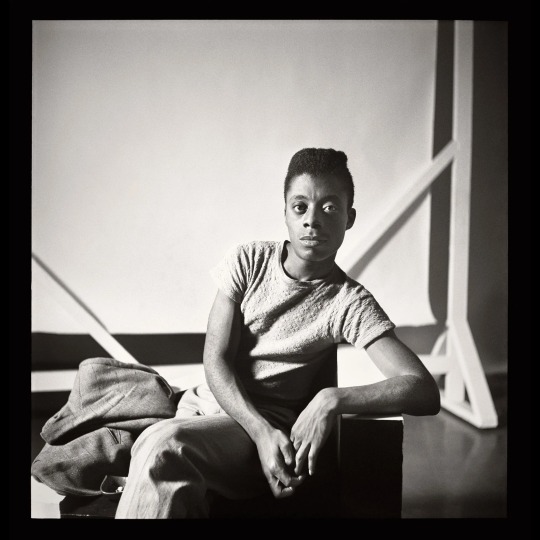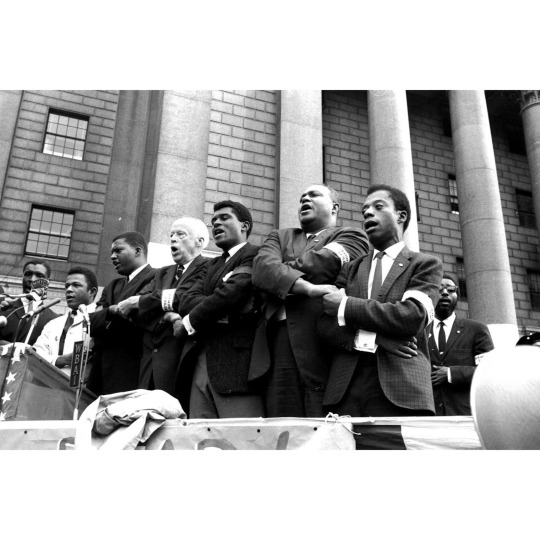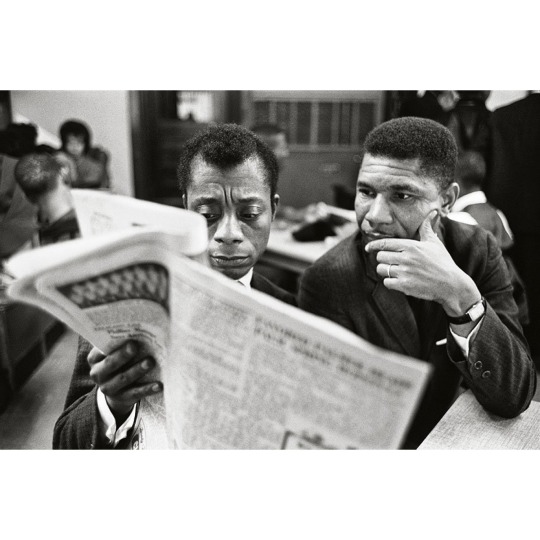#the first pentecostal church was interracial
Explore tagged Tumblr posts
Text
It's a shame because half of US Protestantism is dope shit like what if we had democracy in our church leadership and what if we all got weird with this and just had fun and also maybe some interracial stuff and the other half looked at that and went:

"Y'all are not Calvinist and afraid enough. What if we refused to work with you from 1845 to 1995 because we like slavery. We like that you're saying the best part of being Christian is direct connection with God tho, so let's revere conversion narratives because we need more members. We'll call the periods when we revive our churches by scaring people and indoctrination parties Great Awakenings. Then we could create a man so fucked up he [redacted] children's genitals and shot yogurt up people's asses so they could be good god-fearing Christians!"

wait what? the fuck? this is the first time I'm hearing about this. christians have a Make New Minecraft World event?
#i spent several hours trimming this post#i wrote like 400 words on the Southern Baptist Convention and Brownists#and realized I hadnt even gotten to the first great awakening and revivalism#let alone evangelicals and pentecostals#so i just trimmed it all into onebig conglomerate of fuckery because they all cross pollinate anyway#and tacked on a 'but some protestants are cool' bit bcuz like#a lot of protestants do not belong under the same umbrella as billy graham and jh kellogg#but also every branch brings their own issues to the table#the first pentecostal church was interracial#some evangelical churches are just like. normal guys chillin. doing some sane activism. especially black evangelicals#and then Martin Luther hisself says the Papacy is the antichrist described by Revelations so#also fuck the millerites and adventists specifically.
11K notes
·
View notes
Text
Today's Black History Month illustration is of James Baldwin, one of the 20th century’s greatest writers. Baldwin broke new literary ground by exploring racial, social, sexual, and class distinctions in his works, and he was known for his essays on the Black experience in America.

James Baldwin was born in Harlem in 1924. He was the oldest of nine children. His mother, Emma Jones, married a Baptist minister, David Baldwin, when he was three years old.

Despite their strained relationship, Baldwin followed in his stepfather’s footsteps and became a youth minister in a small Harlem Pentecostal church from ages 14-16. Also during his early teens, Baldwin was spending a lot of his time in libraries and found a passion for writing.

At 18, he worked with the NJ railroad, and then moved to Greenwich Village where he worked for a few years as a freelance writer writing mostly book reviews. Baldwin caught the attention of the well-known writer Richard Wright who helped him secure a grant so he could support himself as a writer.

In 1948, at the age of 24, Baldwin left the US to live in Paris because he couldn’t tolerate the discrimination he experienced. He often was a target of beatings by local youth and the police due to homophobia and racism. Baldwin hoped to find enough distance from the society he grew up in to write about it. Here's a clip of Baldwin and Maya Angelou in conversation:
In 1953, Baldwin wrote his first novel “Go Tell It on the Mountain,” an autobiographical work about growing up in Harlem. This is often seen as his finest work because of the way he described the struggles of Black Americans.

Over the next ten years, Baldwin moved between Paris, New York and Istanbul. He wrote two books of essays, “Notes of a Native Son” and “Nobody Knows My Name,” and two novels “Giovanni’s Room” and “Another Country.” The essays explored racial tension and the novels dealt with then taboo themes (homosexuality and interracial relationships). Nobody Knows My Name and Another Country were immediately bestsellers.

Baldwin’s travels also brought him closer to social concerns of his home, US. In the early 60s, he returned to the US to participate in the Civil Rights Movement. He attended the March on Washington in 1963 and the Selma to Montgomery March in 1965. His essays “Notes of a Native Son”, “Nobody Knows My Name” and “The Fire Next Time” became essential works during this time because of their call for human equality.

After the assassination of his three friends: Medgar Evers (1963), Malcolm X (1965), and MLK (1968), he returned to France and worked on a book about the disillusionment of the times, “If Beale Street Could Talk” (1974).

During the last few years of his life, he continued to produce important works of fiction, non-fiction, and poetry. He also started teaching. Baldwin passed away in 1987 after a short battle with stomach cancer.

This is my last BHM illustration for this series, but I’ll be back tomorrow with a wrap up!
#james baldwin#black history month#black history facts#black history matters#artists on tumblr#illustrators on tumblr
79 notes
·
View notes
Photo

The fabulous James Baldwin
“Who Was James Baldwin?
Writer and playwright James Baldwin published the 1953 novel Go Tell It on the Mountain, receiving acclaim for his insights on race, spirituality and humanity. Other novels included Giovanni's Room, Another Country and Just Above My Head, as well as essays like Notes of a Native Son and The Fire Next Time.
Early Life
Writer and playwright Baldwin was born on August 2, 1924, in Harlem, New York. One of the 20th century's greatest writers, Baldwin broke new literary ground with the exploration of racial and social issues in his many works. He was especially known for his essays on the Black experience in America.
Baldwin was born to a young single mother, Emma Jones, at Harlem Hospital. She reportedly never told him the name of his biological father. Jones married a Baptist minister named David Baldwin when James was about three years old.
Despite their strained relationship, Baldwin followed in his stepfather's footsteps — who he always referred to as his father — during his early teen years. He served as a youth minister in a Harlem Pentecostal church from the ages of 14 to 16.
Baldwin developed a passion for reading at an early age and demonstrated a gift for writing during his school years. He attended DeWitt Clinton High School in the Bronx, where he worked on the school's magazine with future famous photographer Richard Avedon.
Baldwin published numerous poems, short stories and plays in the magazine, and his early work showed an understanding for sophisticated literary devices in a writer of such a young age.
After graduating from high school in 1942, he had to put his plans for college on hold to help support his family, which included seven younger children. He took whatever work he could find, including laying railroad tracks for the U.S. Army in New Jersey.
During this time, Baldwin frequently encountered discrimination, being turned away from restaurants, bars and other establishments because he was African American. After being fired from the New Jersey job, Baldwin sought other work and struggled to make ends meet.
Aspiring Writer
On July 29, 1943, Baldwin lost his father — and gained his eighth sibling the same day. He soon moved to Greenwich Village, a New York City neighborhood popular with artists and writers.
Devoting himself to writing a novel, Baldwin took odd jobs to support himself. He befriended writer Richard Wright, and through Wright, he was able to land a fellowship in 1945 to cover his expenses. Baldwin started getting essays and short stories published in such national periodicals as The Nation, Partisan Review and Commentary.
Three years later, Baldwin made a dramatic change in his life and moved to Paris on another fellowship. The shift in location freed Baldwin to write more about his personal and racial background.
"Once I found myself on the other side of the ocean, I see where I came from very clearly...I am the grandson of a slave, and I am a writer. I must deal with both," Baldwin once told The New York Times. The move marked the beginning of his life as a "transatlantic commuter," dividing his time between France and the United States.
'Go Tell It on the Mountain'
Baldwin had his first novel, Go Tell It on the Mountain, published in 1953. The loosely autobiographical tale focused on the life of a young man growing up in Harlem grappling with father issues and his religion.
"Mountain is the book I had to write if I was ever going to write anything else. I had to deal with what hurt me most. I had to deal, above all, with my father," he later said.
Gay Literature
In 1954, Baldwin received a Guggenheim Fellowship. He published his next novel, Giovanni's Room, the following year. The work told the story of an American living in Paris and broke new ground for its complex depiction of homosexuality, a then-taboo subject.
Love between men was also explored in a later Baldwin novel Just Above My Head (1978). The author would also use his work to explore interracial relationships, another controversial topic for the times, as seen in the 1962 novel Another Country.” (source)
35 notes
·
View notes